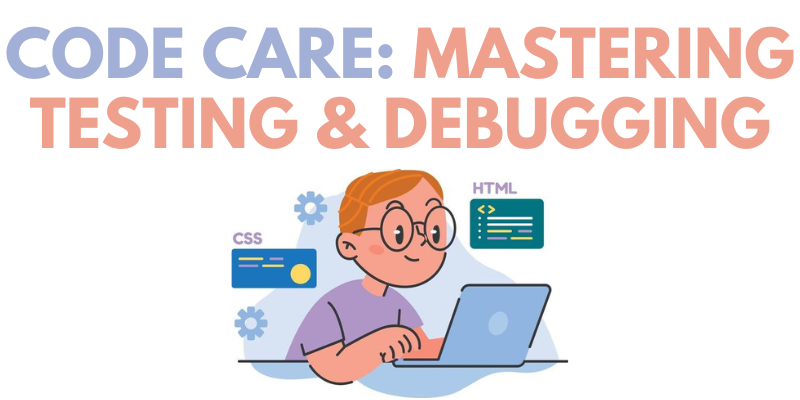Writing code is a fascinating process, but it’s not just about creating something that works once. The actual test of a skilled developer lies in their ability to ensure their code functions seamlessly over time. This process involves testing and debugging, essential steps that guarantee the reliability and stability of the software. This article will explore a systematic approach to testing and debugging code, equipping you with valuable insights to become a more efficient and confident coder.
The Importance of Testing and Debugging
Before diving into the how, let’s first understand the why. Testing and debugging are the backbone of software development, including Freshers Jobs. Testing helps identify defects, prevent potential issues, and ultimately leads to higher-quality software. On the other hand, debugging is the process of eliminating bugs, ensuring that the code behaves as intended. These twin processes are indispensable to a successful software development lifecycle.
Start with a Plan
Effective testing and debugging begin with a well-thought-out plan. Before writing a single line of code, take some time to map out the testing strategy. Identify the requirements, functionalities, and potential edge cases to cover. Determine which types of tests, such as unit tests, integration tests, or user acceptance tests, are most suitable for your project. A clear plan lays the foundation for a successful testing and debugging phase.
Unit Testing for Code Reliability
Unit testing stands as the foundation of testing individual code components in isolation, including Tcs Careers. By creating focused and specific tests, you can ensure each unit functions as intended. The process typically involves writing test cases, executing them, and comparing expected outcomes with actual results. Utilizing testing frameworks like JUnit, PyTest, or Mocha streamlines the process and helps detect issues early in the development cycle.
Integration Testing for Seamless Collaboration
While unit testing is crucial, it’s equally vital to test the interactions between different components. Integration testing confirms that these elements function properly together and identifies any compatibility or communication problems. This step is essential as it ensures that your code functions cohesively, like a well-choreographed dance.
User Acceptance Testing for Customer Satisfaction
Ultimately, the success of any software, including Wipro Careers, hinges on its usability for end-users. User acceptance testing (UAT) involves testing the software in a real-world environment with real users. It allows for feedback and validation from users, ensuring that the software meets their expectations and needs. UAT is a critical step to ensure customer satisfaction and identify potential improvements, making it essential for Wipro Careers and other endeavors.
Effective Debugging Techniques
Even with meticulous testing, bugs can creep into the code. Debugging is an art that requires patience, creativity, and problem-solving skills. One of the fundamental techniques is using logging and print statements strategically to trace the code’s execution path. In addition, using IDE features like breakpoints and monitor variables as well as debugging tools may be quite beneficial in figuring out the source of problems.
Reproduce and Isolate Bugs
The key to efficient debugging is the ability to reproduce the bug consistently. If you can recreate the issue in a controlled environment, you can isolate the problematic section of code. Once the faulty code is identified, the process of debugging becomes more manageable.
Conclusion
In the world of software development, testing and debugging are not optional but imperative. A structured approach to testing, including unit testing, integration testing, and user acceptance testing, ensures a robust and reliable codebase. When it comes to debugging, perseverance and methodical techniques will help you conquer even the most elusive bugs.
